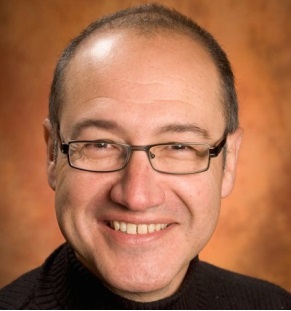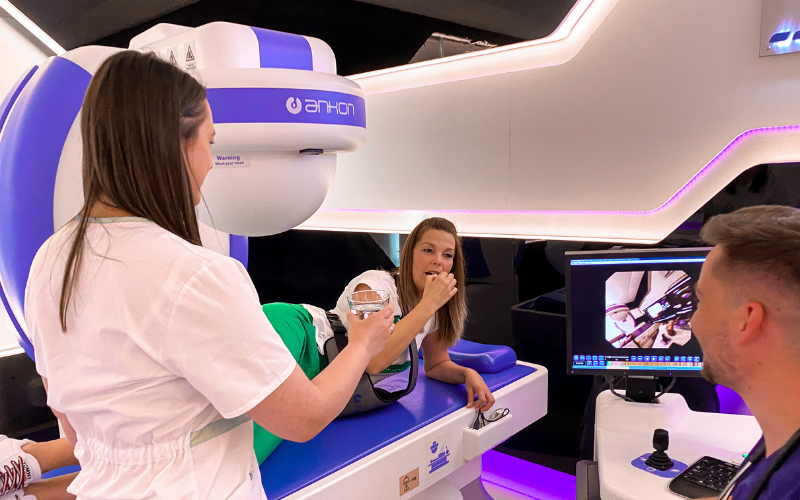Who owns your DNA?

The DNA double helix is naturally occurring. Every one of us has millions of them, and they are all unique to us. Francis Crick and James Watson discovered the DNA double helix in 1953. They didn’t patent it. They did, however, win the Nobel Prize for their amazing discovery. In those days, a discovery was not considered an “invention.” But over the years, that has changed.
In 1975, Herbert Boyer from the University of California, San Francisco persuaded a savvy venture capitalist, Robert Swanson, to back his idea of producing pure human hormones, like insulin, using the invention that he and his colleague, Stanley Cohen, had developed.
Their invention enabled the bits of human DNA that coded for human proteins to be spliced from the human genome and inserted into bacteria. It tricked the bacteria into producing the protein that the DNA coded for. Think of DNA as the blueprint for a tool and the protein as the tool and you’ll understand the relationship more easily.
The modern biotechnology industry was born. Genentech, the company that Boyer and Swanson floated on the NASDAQ Stock Market in 1976, made them both very, very rich. Boyer had once said, “You can’t get rich in a university.” He was right.
For more than 30 years, patent attorneys and the biotechnology industry hoodwinked Americans and American investors by using a simple semantic device. They argued, and the United States Patent and Trademark Office agreed, that isolated DNA was an invention, even if it was identical in every practical way to the same DNA inside the human body.
This little deception fueled the genetic gold rush. Biotech companies like Biogen, Amgen, Chiron, and Genentech owe their very existence to this sleight of hand.
Fortunately, the U.S. Supreme Court wasn’t fooled. A little over a year ago, it decided that you can’t patent DNA, even if the DNA is “artificial” because it’s been isolated, or removed from its natural environment (a human being).
It did say that you can patent complementary DNA (cDNA), which, it was argued, is not naturally occurring. (That’s not entirely correct – cDNA does exist in nature – but at least the biotechnology industry, with the help of the U.S. attorney general who argued that cDNA is patentable subject matter, was able to salvage something.)
As you can imagine, patent lawyers aren’t happy about the Supreme Court’s ruling. And neither is the Biotechnology Industry Organization. Right now, they are on the warpath. They believe the U.S. Supreme Court is out of step with the rest of the world. They want it all – cDNA and isolated DNA.
This is where the Federal Court of Australia, a loyal friend to the U.S. Court of Appeals for the Federal Circuit, stepped in. Earlier this month, the Australian court decided that the U.S. Supreme Court was wrong on the facts, the science, and the law. It held that isolated human genes that are linked to breast and ovarian cancer, located on human gene BRCA1, are inventions under Australian patent law.
The Federal Circuit was created in 1982 and given exclusive appellate jurisdiction over patents. Judges like Randall Rader and Alan Lourie were appointed to guide the court’s development of patent law. Lourie had been a chemical patent attorney for 25 years at SmithKline, one of the world’s biggest pharmaceutical companies. He and former Chief Judge Rader did a great job for the biotechnology industry. They made sure that the Federal Circuit’s decisions were consistent with the patent attorney’s traditional position on patentable subject matter.
Rader recently left the Federal Circuit under a bit of a cloud, but his friends – like Justice Annabelle Bennett, one of the five judges that put their names to the Federal Court of Australia’s decision – are trying to salvage the Federal Circuit’s reputation, which has been somewhat battered and bruised, as the U.S. Supreme Court has overruled just about every patent decision it’s made. It’s overruled the Federal Circuit twice over its decisions to permit the patenting of isolated DNA.
The Australian equivalent of the U.S. Supreme Court, the High Court of Australia, is now going to have to resolve the judicial schism between U.S. and Australian patent law over isolated DNA. An appeal has been filed. We’ll have to wait and see if the High Court backs the U.S. Supreme Court.
– written by Luigi Palombi, provided to BBJ by The Mark News
Luigi Palombi is an intellectual property lawyer and academic. He spearheaded a campaign against the BRCA gene patents leading to an Australian Senate Inquiry into gene patents. He practices law in the medical, biotech, and pharmaceutical sectors in Australia and overseas, and is an adjunct professor of law at Murdoch University. He is author of the book, Gene Cartels.
SUPPORT THE BUDAPEST BUSINESS JOURNAL
Producing journalism that is worthy of the name is a costly business. For 27 years, the publishers, editors and reporters of the Budapest Business Journal have striven to bring you business news that works, information that you can trust, that is factual, accurate and presented without fear or favor.
Newspaper organizations across the globe have struggled to find a business model that allows them to continue to excel, without compromising their ability to perform. Most recently, some have experimented with the idea of involving their most important stakeholders, their readers.
We would like to offer that same opportunity to our readers. We would like to invite you to help us deliver the quality business journalism you require. Hit our Support the BBJ button and you can choose the how much and how often you send us your contributions.









